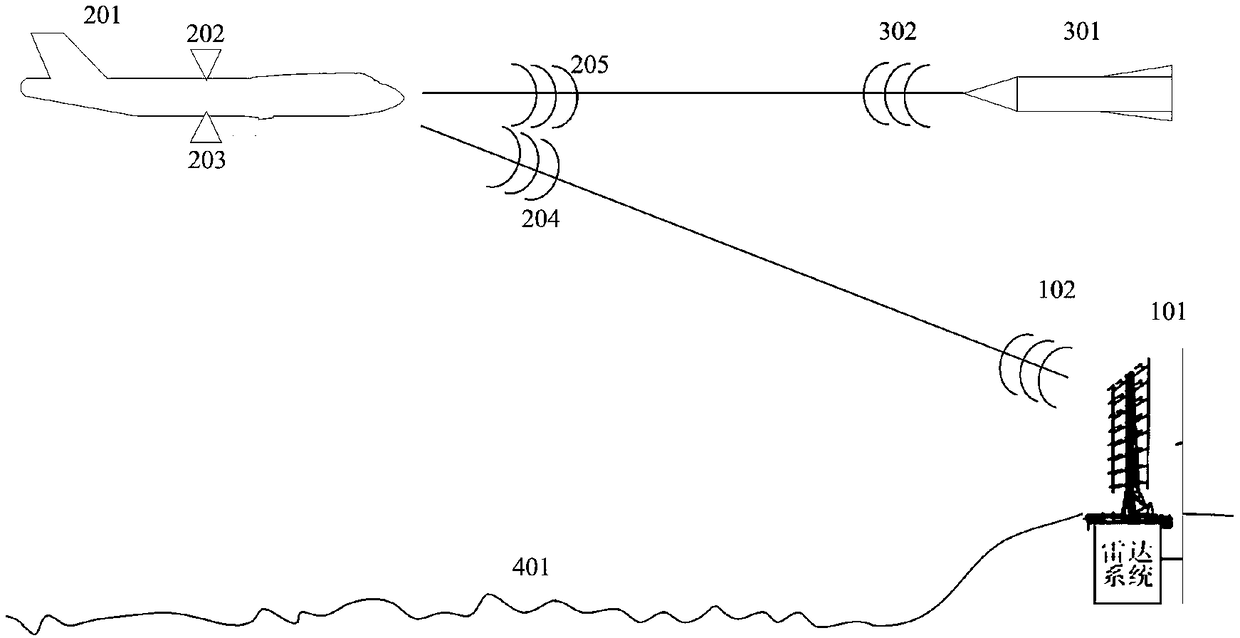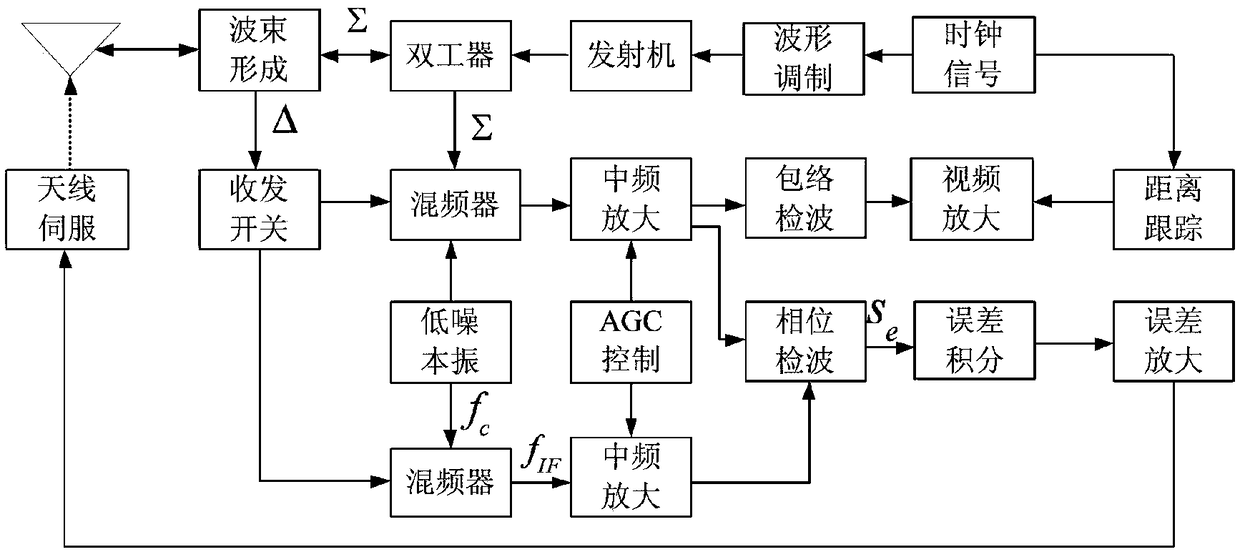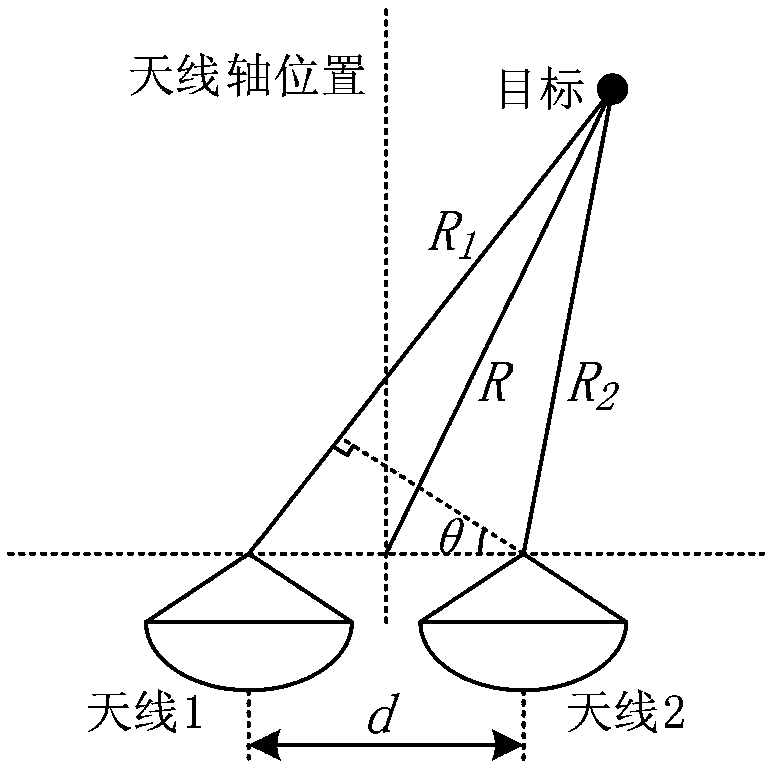Single-pulse radar cross-eye interference detection method based on auxiliary channel
A monopulse radar, auxiliary channel technology, applied in radio wave measurement systems, instruments, etc., to achieve the effect of resisting cross-eye interference and improving the ability to identify interference
- Summary
- Abstract
- Description
- Claims
- Application Information
AI Technical Summary
Problems solved by technology
Method used
Image
Examples
Embodiment Construction
[0097] The present invention will be further described below in conjunction with the accompanying drawings.
[0098] figure 1 It is the applicable scope, platform and application scenarios of the present invention. 101 in the figure is the electromagnetic signal 102 generated by the monopulse radar on the ground, searching and tracking an aircraft 201 in the air. In order to avoid the tracking of the ground radar, the aircraft 201 carries two source direction cross-eye jammers (202, 203) to cross the ground radar. Eye disturbance 204. Ground-based radars require targeted signal processing to detect the presence of cross-eye jamming. Another typical application scenario is shown in 301 equipment. The monopulse radar of 301 equipment emits electromagnetic signal 302 to track and guide the aircraft 201 in the air. In order to avoid the strike of 301 equipment, aircraft 201 uses cross-eye jammers (202, 203) to conduct cross-eye jamming 205 on 301 equipment. Equipping a radar s...
PUM
 Login to View More
Login to View More Abstract
Description
Claims
Application Information
 Login to View More
Login to View More - R&D
- Intellectual Property
- Life Sciences
- Materials
- Tech Scout
- Unparalleled Data Quality
- Higher Quality Content
- 60% Fewer Hallucinations
Browse by: Latest US Patents, China's latest patents, Technical Efficacy Thesaurus, Application Domain, Technology Topic, Popular Technical Reports.
© 2025 PatSnap. All rights reserved.Legal|Privacy policy|Modern Slavery Act Transparency Statement|Sitemap|About US| Contact US: help@patsnap.com



